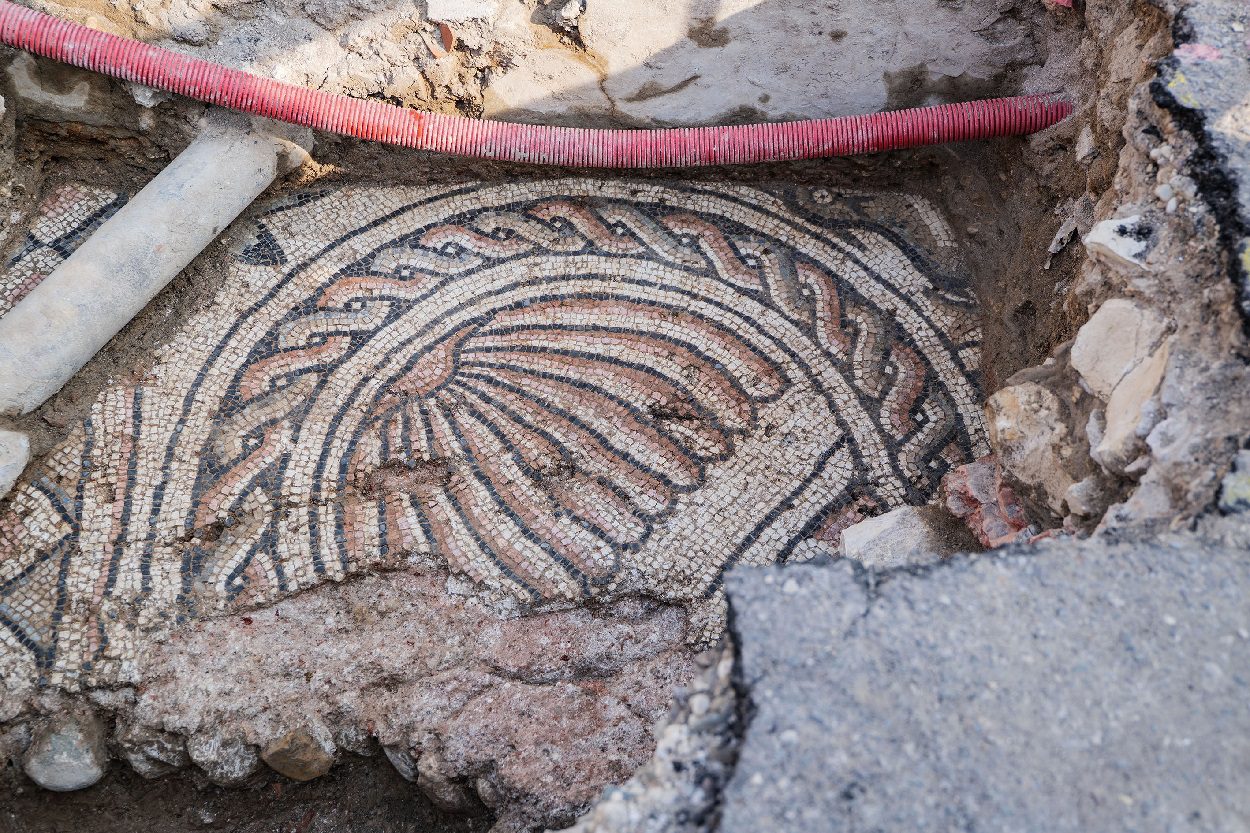Archaeologists have uncovered a Roman mosaic from a large villa complex in Montorio, believed to be associated with Theodoric.
Although there are no examples of epigraphic evidence, the high status of the mosaic in a late antique villa from the 4th or 5th century AD is suggestive of a connection to Theodoric or a Roman official of considerable rank.
Theodoric, also know as Theodoric the Great was king of the Ostrogoths between AD 471 to 526 and ruled an independent Ostrogothic Kingdom of Italy between AD 493 to 526. Theodoric himself only used the title ‘king’ (rex), although some scholars characterise him as a Western Roman Emperor in all but name.
Seeking to restore the glory of ancient Rome, Theodoric promoted the rebuilding of Roman cities and the restoration in Italy of civic structures and monuments, such as the Palace of Domitian on the Palatine Hill, the Senate’s Curia, the Theatre of Pompey and the refurbishment of city aqueducts, sewers and a granary in Rome.

The mosaic was revealed during excavation work to replace gas pipes, when workers came across fragments with motifs and marine figures such as a possible dolphin, and shell depictions which may be part of a Roman spa in the villa complex.
Previous excavations at the site date from 1908, with ongoing work revealing the presence of a large, fortified complex extending over an area of 3.7 acres, in addition to evidence of scattered residential areas in the wider area around Montorio.
The superintendent of Verona Vincenzo Tinè has suggested that the historic discoveries found over the past several decades should be presented in a dedicated museum, supported with a virtual system of all the remains now fragmented and hidden in the streets of Montorio.
Header Image Credit : AGSM AIM Group







